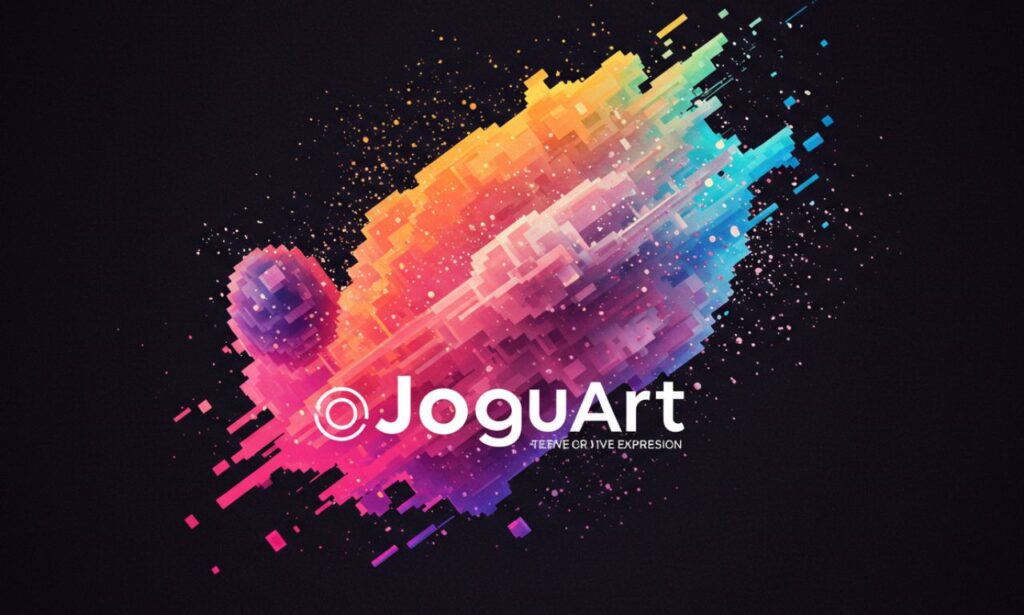In the realm of modern art, JoguArt stands out as a name that blends curiosity, innovation, and communal spirit. But what exactly is JoguArt? In simplest terms, it refers to a creative movement (or emerging brand) combining digital art, interactive media, and collaborative storytelling in a way that empowers artists and audiences together.
Unlike traditional art forms where the artist and viewer remain in separate roles, JoguArt aims to break those boundaries. It invites participation, remixing, and co-creation. Over the past few years, JoguArt has quietly been gathering momentum among designers, coders, visual artists, and even hobbyists who wish their work to live, evolve, and breathe with others.
In the rest of this article, you’ll find a humanized, in-depth exploration of JoguArt: its origins, principles, tools, challenges, real examples, its social impact, and how you can partake in it. This is a fresh, unique presentation designed with thoughtful tone, so you’ll sense the creative energy behind it.
The Origins & Philosophy Behind JoguArt
Names and Meanings
“JoguArt” is likely a coined fusion of terms—“Jogu” (which, in some contexts, can evoke playfulness, journeying, or even local linguistic roots) and “Art.” It’s meant to feel approachable yet suggestive: not just “digital art,” but something more fluid, more communal.
The philosophy behind JoguArt revolves around:
-
Adaptive creative surfaces: Art that shifts over time or via user input.
-
Open authorship: Projects where multiple voices contribute, remix, or extend.
-
Meaningful interaction: Not gimmickry, but interaction that deepens engagement—visual, conceptual, narrative.
-
Layered identity: Many JoguArt pieces carry hidden layers, alternate paths, or secret versions.
At its heart, JoguArt is less about style and more about process: how art is made, shared, reinterpreted, and lived.
Early Influences & Precedents
JoguArt draws inspiration from several domains:
-
Generative art & algorithmic art: where code produces visuals that evolve.
-
Glitch art and aesthetic disruption: the beauty in breaks, errors, noise.
-
Participatory art and social sculpture: works where the audience becomes co-creator.
-
Remix culture & open source ethos: encouraging derivative works, attribution, and evolution.
From these roots, JoguArt gathers a unique identity: not a mere combination, but a synthesis that encourages emergent creativity.
Core Components of JoguArt Projects
To understand JoguArt deeper, let’s break down its core components—what typically appears, how things are structured:
Dynamic Visual Layers
A JoguArt piece often consists of base visuals (images, sketches, textures) plus algorithmic or interactive layers. As users interact—via clicking, dragging, noise input, timers—visuals shift, distort, or unfold. The work is never entirely static.
Modular Elements & Remixability
Elements in JoguArt are modular: shapes, patterns, color schemes, audio snippets, textual fragments. Creators often release modules so others can remix, replace, or resculpt the piece, leading to many branched derivatives that still carry the original “spirit.”
Narrative Threads or Story Fragments
Sometimes behind the visuals lie story fragments—poems, lore, memories, glitch messages. These narrative threads might reveal small hints, prompting users to explore deeper, decode or recombine them.
User Participation & Feedback Loops
Some works invite users to submit inputs—images, text, sounds—to be woven into the piece. Others accumulate data over time, evolving based on usage statistics, time of day, or global inputs from all viewers.
Versioning & Evolution
A hallmark is that JoguArt pieces may exist in versions. Version 1.0, 2.1, 3.0… each iteration may incorporate community feedback, new modules, bug fixes or even aesthetic changes. Thus, the work lives like a software project.
Why JoguArt Matters Today
Bridging Digital & Human Experience
In an era of screens and algorithms, JoguArt reminds us that creativity can be digital and deeply human—not cold code but code infused with emotion, purpose, and narrative.
Empowering Emerging Creators
Because JoguArt encourages remixing and modularity, it lowers barriers to entry. Someone with basic code skills, or even just an idea, can plug into a larger ecosystem, experiment, and contribute.
Fostering Micro-Communities
Each JoguArt project often spawns a small community: contributors, remixers, viewers who comment, propose changes, or co-curate. That social dimension transforms art into living conversations.
Resistance to Passive Consumption
Traditional digital art often is served—and consumed. JoguArt pushes against that passivity. It asks: what if art asks you something? What if you respond, intervene, remix?
Potential Real-World Collaboration
Brands, institutions, or events might commission JoguArt works for immersive exhibits, interactive installations, or public displays. A JoguArt mural in a city plaza might evolve via passersby’s phone inputs.
How to Create a JoguArt Project: Step by Step
Here’s a rough roadmap if you want to try building your first JoguArt piece:
-
Define Your Core Pulse
What is the “touch” of your piece? Maybe feedback to movement, noise, or time of day. Define a small interactive kernel. -
Choose Tools & Platform
Options include p5.js, Processing, Three.js, ShaderToy, WebGL, Unity Web. Pick what you know or want to learn. -
Design Modular Assets
Create base visuals (textures, sketches, audio snippets), separated so they can be swapped or remixed. -
Build Interaction & Feedback Mechanisms
Add event listeners (mouse, keyboard), sensors (if hardware), timers, or external APIs to affect visuals. -
Enable Remix / Plug-in Points
Design your project so modules can be dropped or replaced. Document how others can add or remix. -
Deploy & Share
Host on a creative platform (GitHub + web host, CodePen, etc.). Share remixes, document evolution. -
Gather Feedback & Iterate
Listen to user responses, watch how they use it, refine modules, add versions. -
Archive Versions & Credits
Keep a version history; credit contributors; maybe issue remix licenses.
Example: “EchoBloom” — A Hypothetical JoguArt Work
Imagine EchoBloom, a JoguArt piece where viewers upload a short audio clip (10 seconds). The system transforms it into a bloomed visual garden: frequencies become colored stems, amplitude blossoms become petals. Users can drag parts of that visual to remix, invert, or overlay with another viewer’s contribution.
Over time, EchoBloom accumulates a “garden” mosaic—modules from hundreds of contributors. Later, in version 2.0, the creator adds time-based mutations: at midnight, colors shift; in version 3.0, users can pair their submissions with text snippets, producing micro-stories embedded in the visuals.
Over months, EchoBloom develops a community: people returning to view their contributions, reshaping others’, or just exploring the evolving visual garden.
Challenges & Pitfalls in JoguArt
While JoguArt is exciting, it also carries challenges. Awareness of these will help you build more resilient projects.
Technical Complexity & Optimization
Interactive visuals, real-time rendering, modular plug-in systems—all require careful optimization. Poorly managed, they lag or break on slower devices.
Version Management & Fragmentation
If every remix diverges, the “core” identity risks fragmentation. Balancing openness and coherence is delicate.
Attribution & Licensing Conflicts
When many contributors remix, disputes over credit or rights may arise. Clear licensing (e.g. Creative Commons, MIT) from the start helps mitigate.
Community Contribution Drop-off
Initial enthusiasm may fade. Maintaining momentum—new modules, challenges, events—is necessary to keep a JoguArt project alive.
Accessibility & Performance
Not all audiences have powerful devices or sensor input. Ensure fallback modes, simplified interaction, or non-interactive versions to widen reach.
Meaning Depth vs. Gimmick
An interactive visual that’s purely spectacle might not leave resonance. JoguArt projects need emotional, narrative, or conceptual foundation—not just “cool effects.”
Real-World Impacts & Use Cases
Educational & Workshops
JoguArt can be a pedagogical tool: students remix or build modules, learning coding, visual theory, interactivity, and design through direct creative practice.
Art & Exhibition Spaces
Galleries or digital art festivals can host JoguArt installations, inviting viewers to shape parts of the work in real time or through remote input screens.
Digital Branding & Campaigns
Brands or organizations may commission a JoguArt piece for an event, letting attendees “leave their mark” and become co-creators of campaign visuals.
Cultural & Social Projects
JoguArt may be used to animate local stories—citizens uploading images or stories, which are woven into evolving public visual installations that reflect communal memory.
Charity & Awareness
A cause might run a JoguArt project where participants upload short testimonies, visual inputs, and the evolving piece becomes a living memorial or narrative of collective voices.
How to Join the JoguArt Movement
If you’re curious how to step in, here are actionable steps:
-
Follow existing JoguArt projects, see how they structure modules, APIs, remix paths.
-
Learn creative coding frameworks (p5.js, Processing, WebGL) so you can prototype.
-
Start small: build a minimal interactive module—say, a visual that reacts to mouse position or microphone input.
-
Publish and invite remixers: make modular parts open source, document how to plug in.
-
Host remix challenges or prompts (“Give me a 10-line poem, I’ll map it into visuals”) to engage others.
-
Archive version history and document evolution publicly.
-
Collaborate across fields: visual artists, writers, musicians, coders, storytellers all bring perspective.
The Social & Conceptual Value of JoguArt
Democratic Creativity
In JoguArt, creativity is less elite and more shared. The barrier to participating is lower, and the final output is layered, plural, communal.
Evolving Meaning
Over time, the same JoguArt piece may shift in tone, meaning, and structure—mirroring the idea that art (and culture) is not static but constantly renegotiated.
Hybrid Identities
JoguArt sits at the intersection of art, code, narrative, and community. It challenges traditional categories: is it “digital art”? Is it “interactive story”? allows fluid identities.
Memory & Trace
Because JoguArt accumulates contributions and versions, works often carry traces of their creators. Those traces become part of the memory embedded in the art itself.
Future Trajectories: What’s Ahead for JoguArt
-
Integration with AR/VR: Imagine walking through a JoguArt garden in augmented reality, where your gestures remix visuals in space.
-
AI-assisted modules: Using generative AI to suggest new visual or narrative modules that remix contributor inputs.
-
Persistent platforms & networks: Centralized hubs where many works co-exist, allowing cross-pollination.
-
Physical + digital hybrids: Gallery installations where digital visuals project onto physical surfaces, and physical interactions feed back into the digital.
-
Blockchain & provenance: Using NFTs or decentralized systems to track remix lineage, credit contributors, and mint versioned works.
-
Institutional adoption: Museums, schools, public agencies commissioning works for exhibitions, cmmunity projects, or urban displays.
A Personal Reflection on JoguArt
As I researched and imagined JoguArt, what strikes me most is its potential to humanize the digital. It’s not a sterile algorithm—it’s art that lives, breathes, responds, and invites you in. It’s collaborative, imperfect, tentative. It reminds us that creativity is not a monologue but a conversation—between creator, code, and community.
If I were to build a piece today, I’d start with a simple kernel: let users upload a short phrase, convert it to a color curve, and let it blossom over time with remix modules. I’d let people “plant” seeds visually and see how others graft or remix them. Over months, I’d watch how these seedlings evolve into a forest of creative interplay.
In that journey, JoguArt feels less a project and more a living experiment—where the boundaries between creator and audience blur, where art becomes a shared space, where meaning is a collective unfolding.
Conclusion
JoguArt is more than a name—it’s an evolving creative paradigm. It embraces interactive visuals, remixable modules, narrative threads, versioned evolution, and social participation. In a digital world saturated with static content, offers moving, breathing, co-created experiences that shift and surprise.
If you’re an artist, coder, storyteller, or simply someone drawn to play with form and meaning, may be the field where your next experiments live. Dive in. Make small gestures. Remap, remix, evolve—and see how your touch becomes part of a larger tapestry.






